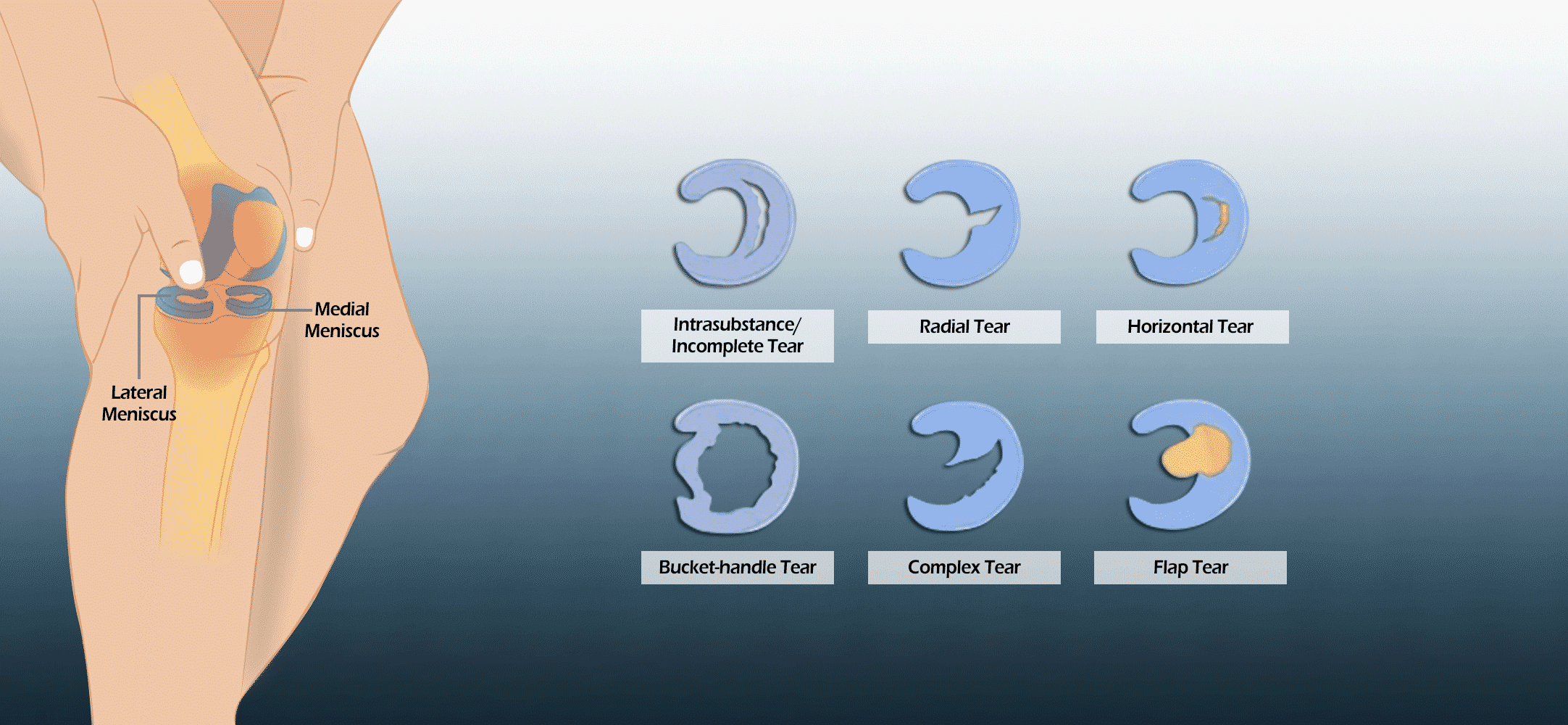
The meniscus is a piece of cartilage in the knee that cushions and stabilizes the joint. Pain often begins during movement and may worsen when bending the knee fully. Many patients describe it as sharp, especially when climbing stairs or standing from a low chair. This pain does not always start immediately after injury. In some cases, the discomfort appears slowly and builds over days. Some individuals continue walking after the tear but feel increasing tightness later. The pain may stay localized around the inner or outer knee, depending on which meniscus is torn.
Swelling may not appear instantly but often develops within the first 24 hours
Unlike some other knee injuries, swelling isn’t always immediate. Swelling may not appear instantly but often develops within the first 24 hours. It can feel like fullness or heaviness around the joint. The buildup of fluid may cause stiffness and limit range of motion. Patients often wake up the next morning with difficulty bending or straightening the leg. Swelling may continue for several days if untreated. Sometimes, the swelling returns after walking or standing for long periods. This recurring inflammation may confuse patients who feel fine in between episodes.
Clicking, catching, or locking sensations can signal internal joint disruption
A torn meniscus can interfere with smooth joint function. Clicking, catching, or locking sensations can signal internal joint disruption. These mechanical symptoms usually happen when loose cartilage interferes with knee movement. In some cases, the knee locks in a partially bent position and won’t extend fully. That moment can feel alarming, especially when the knee suddenly gives way. The instability may affect confidence in walking or athletic activities. Even small tears can cause these symptoms if the flap catches between joint surfaces. This type of movement issue often leads patients to seek evaluation.
Limited motion or inability to fully straighten the leg is common with larger tears
Larger tears affect the knee’s ability to move normally. Limited motion or inability to fully straighten the leg is common with larger tears. The joint may feel stuck or rigid, especially after rest. Patients might notice this limitation more after sitting or sleeping. The stiffness may improve slightly with gentle movement but returns quickly with overuse. Some individuals feel like something is blocking their joint internally. This restriction is not always painful but limits daily function. Bending the knee too far may also feel unsafe or uncomfortable.
Tenderness along the joint line often appears with meniscal injuries
One consistent sign of a torn meniscus is sensitivity to pressure. Tenderness along the joint line often appears with meniscal injuries. Pressing the inside or outside of the knee may reproduce the pain. This localized soreness helps distinguish meniscus issues from deeper joint or ligament problems. The tenderness is often near the spot where the tear occurred. Some people can point exactly to the painful area. The discomfort may become more noticeable when kneeling or squatting. This physical exam clue helps guide further imaging or referral decisions.
Some people notice instability or a sense of the knee shifting unexpectedly
Knee stability often changes after meniscus damage. Some people notice instability or a sense of the knee shifting unexpectedly. They may describe the knee as loose or unpredictable. This sensation can happen while walking or turning. It’s more common when standing from a seated position quickly. The feeling might lead people to favor the opposite leg. Over time, this imbalance can cause strain elsewhere in the body. The instability does not always come with pain but still disrupts mobility. Addressing it early helps prevent further joint stress.
Not every tear causes severe pain, which can delay diagnosis
Some tears remain unnoticed for days or even weeks. Not every tear causes severe pain, which can delay diagnosis. A mild ache or tightness might be the only clue. People often attribute these signs to overuse or minor strain. Only when movement becomes more difficult does the suspicion grow. A partial tear might only flare up after heavy activity. Small tears can worsen over time if left untreated. That’s why a thorough exam is recommended even with mild symptoms.
MRI scans provide detailed images to confirm the presence and location of a tear
Imaging helps clarify uncertain cases. MRI scans provide detailed images to confirm the presence and location of a tear. Unlike X-rays, MRI shows cartilage and soft tissue clearly. The scan reveals the tear’s shape, size, and proximity to blood supply. That detail matters when deciding between rest or surgery. In some cases, meniscus tears are found incidentally during scans for other problems. This imaging also rules out ligament injuries that might mimic similar symptoms. Doctors combine these findings with physical exams for accurate treatment planning.
Some tears heal with rest, physical therapy, and gradual return to activity
Not every torn meniscus requires surgery. Some tears heal with rest, physical therapy, and gradual return to activity. Small tears on the outer edge often respond well to conservative care. That area has better blood flow and can regenerate more easily. Therapy focuses on strengthening surrounding muscles to reduce knee pressure. A brace or sleeve may help with support during recovery. Avoiding squats and pivoting movements allows the tear to settle. With patience, many people regain full function without invasive procedures.
Larger or unstable tears may require arthroscopic surgery for repair or removal
When symptoms persist or worsen, surgical intervention becomes necessary. Larger or unstable tears may require arthroscopic surgery for repair or removal. The surgeon inserts a small camera into the knee to assess the damage directly. If possible, the tear is stitched together to preserve cartilage. In other cases, damaged portions are trimmed to smooth the surface. This minimally invasive technique reduces recovery time and limits scarring. Most people walk the same day and return to light activity within weeks. Rehabilitation helps regain strength and prevent future injuries.
Activity modification is essential during both conservative and surgical recovery
Regardless of treatment type, healing requires behavioral changes. Activity modification is essential during both conservative and surgical recovery. Patients must avoid twisting or deep bending for several weeks. Weight-bearing may be limited in the early phase. Swelling should guide intensity—if it returns, rest is necessary. Return to sports usually takes longer than walking recovery. Physical therapists tailor routines based on individual healing rates. Following the plan helps preserve joint function and reduce reinjury risk.
Long-term joint health depends on protecting remaining cartilage from further damage
Even after healing, the knee remains vulnerable. Long-term joint health depends on protecting remaining cartilage from further damage. People with prior meniscus injuries are at higher risk for arthritis. Repeated stress on the joint can accelerate wear. Low-impact activities like cycling or swimming are often safer choices. Regular strength training helps maintain balance and stability. Periodic check-ins with a specialist may catch small issues before they escalate. The goal is not just recovery—but sustained mobility for years to come.
Source: Best Orthopedic Surgeon in Dubai / Best Orthopedic Surgeon in Abu Dhabi
